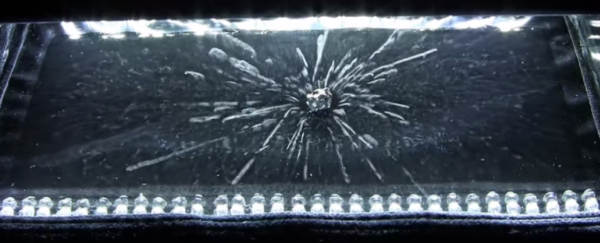
Ever wondered what radiation looks like? If you have, I bet you didn't think it would look as cool as this. This is a small piece of uranium mineral sitting in a cloud chamber, which means you can see the process of decay and radiation emission.
So, what's a cloud chamber? It's a sealed glass container cooled to -40°C, topped with a layer of liquid alcohol. According to Cloudylabs on YouTube, who made the video above, vapour emitted from the alcohol fills the container below, and most of it condenses on the glass surface, but some of it will remain as a vapour above the cold condenser.
"This creates a layer of unstable sursaturated vapour which can condense at any moment," says Cloudylabs. "When a charged particle crosses this vapour, it can knock electrons off the molecules forming ions. It causes the unstable alcohol vapour to condense around ions left behind by the travelling ionising particle. The path of the particle in the matter is then revealed by a track composed of thousands droplets of alcohol."
Using this equipment, you can visualise any charged particle, including alphas, electrons, positrons, protons, nuclear charged fragments, and muons, and their tracks will look different, depending on how fast they travel, how much mass they have, and their charge.
Cloudylabs explains what you can see in the video above:
"This video shows the Cloudylabs's cloud chamber running for approx. 50 min with an Uranium mineral. After 40 min, there is not enough alcohol to make newer trails. With time, the alcohol [will] condense on the mineral. The small thickness of liquid alcohol on the mineral is enough to absorb a part of the energy of the alpha particles (their ranges in air for 5 MeV is 3-4 cm, but in water, it's 15 micrometres), so with time, the trails are shorter than in [the] beginning. It's preferable to make such experience during 10 minutes to have longer alpha track."
Esther Inglis-Arkell over at io9 has a really great rundown of how you can actually do something similar to this yourself using nothing by party supplies. And nope, no uranium required.
Source: SPLOID
